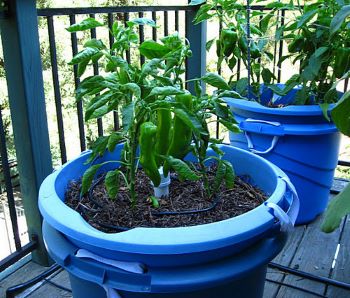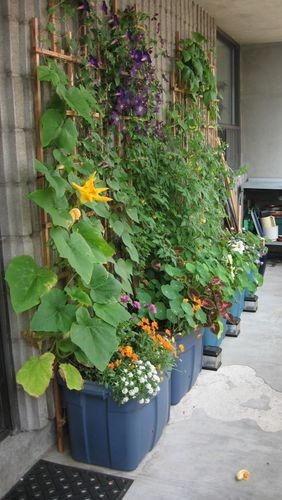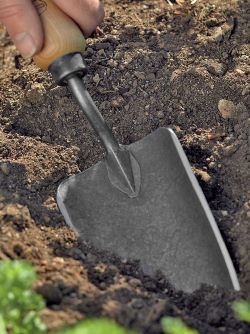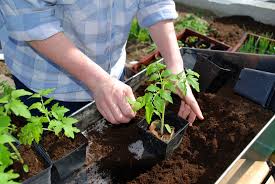Creating a Container Garden

No yard, no room, no problem!
Anyone can grow vegetables. All you need is a container, soil and plants.
Clay pots are usually more attractive than plastic ones, but plastic pots retain
moisture better and won't dry out as fast as unglazed terra-cotta ones.
If you want to get fancy, slip a plastic pot into a slightly larger clay pot.
Black pots absorb heat when they are sitting in the sun.
 However, plants are not fussy about their containers. You can use plastic storage tubs, fabric
bags, or metal containers. Just be sure that it has drainage holes in the bottom.
However, plants are not fussy about their containers. You can use plastic storage tubs, fabric
bags, or metal containers. Just be sure that it has drainage holes in the bottom.
Tip: Large plants need lots of space, and most roots need room to grow.
Avoid small containers as they often can't store enough water to get through hot days.
Plus, the bigger your container, the more plants you can grow roots and create big plants!
What do you need?
- Container with drainage holes
- soil and compost
- trowel
- seeds or plants
- plant marker
Let's get started!
Gardening Instructions
1. Soil for a container:
Soil in containers should be a good mix.
Garden soil doesn't offer enough air, water, or nutrients to container-grown plants. You can
find complicated formulas on the Internet, but I have had success with top soil and compost
you can buy at a home improvement store. Add compost and some shredded leaves for drainage
and you have a great mix. You should measure two parts soil to one part compost.
 2. Location of your containers:
2. Location of your containers:
Place containers where they will receive maximum sunlight and good ventilation. Vegetables
need a minimum of six hours of sunlight at day. More sun the better. Some vegetable can survive
with less sun such as lettuce and other leafy greens. These cool weather crops can benefit
from partial shade on hot summer days.
3. Size of your containers:
Different plants have certain size requirements for their containers.
This is very important
and will determine success or failure in growing vegetables in containers.
See the chart here.
4. Planting your containers:
For seeds, see the tutorial on cool weather vegetables. Consult the seed packet for how
deep the seeds should be planted. But wait until warm temperatures to plant cucumbers and bean
seeds.
For plants, use a trowel. Carefully remove the potted plant from its pot without damaging
its roots and place in the hole. Gently press soil around the plant and water deeply.
Common vegetables to start as plants in containers are tomatoes, peppers, and eggplants.

5. Water your seeds and plants:
Many plants grown in pots must be watered as often as twice a day.
Tip:To keep plants cool and moist during hot summer days, double-pot:
Place a small pot inside a larger one and fill the space between them with
sphagnum moss or crumpled newspaper. Water both pots and filler.
6. Feeding your plants in containers:
Feed container plants at least twice a month with liquid fertilizer,
following the instructions on the label.
Tip: An occasional application of fish emulsion or compost will add trace
elements to container soil.
7. Supporting your vegetables in containers:
Containers are perfect for vertical gardening. You can buy mini trellises to hold up your
tomatoes and vining cucumbers. But if you don't have access to a trellis, you can tie your
vegetables to the rungs of your deck fencing.

 However, plants are not fussy about their containers. You can use plastic storage tubs, fabric
bags, or metal containers. Just be sure that it has drainage holes in the bottom.
However, plants are not fussy about their containers. You can use plastic storage tubs, fabric
bags, or metal containers. Just be sure that it has drainage holes in the bottom.
2. Location of your containers:
